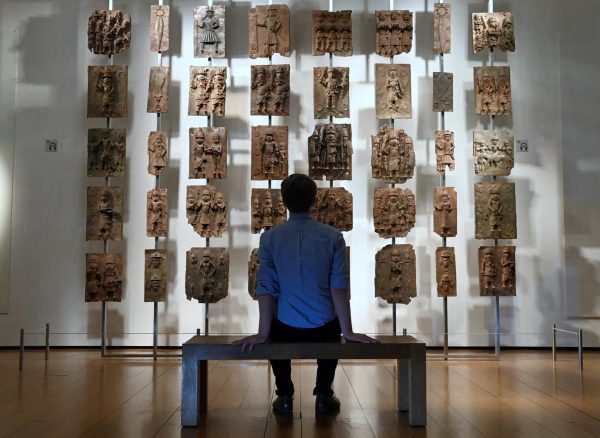Column: Learn from rodents — leave tree chopping to beavers
Photo credit: NPS.gov
A beaver gnaws on a plant in Lily Lake, located in Rocky Mountain National Park. Beavers live in lakes and rivers; they create their homes and dams using nearby trees.
Beavers are the environmentalists we all should aspire to be. Even though they’re known for cutting down trees, they transform forests and tailor them to their exact needs, all while making sure not a single tree gets wasted.
By the time beavers are completely done with tree cutting, the surrounding forest often consists of only one species of tree. This is because beavers are very particular about which species of tree they build with, and most colonies have a preference.
In order to make the most out of every tree, beavers have found a plethora of uses for them. They eat them, build with them and trim their teeth with them, but they’re most well known for creating dams and lodges. A beaver dam is a structure made of tree trunks and branches that beavers have carefully selected. These rodents have the peculiar but outstanding ability to build minuscule dams in rivers, creating tranquil pools which become ideal housing.
As you can see, beavers are extremely resourceful. However, on the entirely opposite spectrum of the environmentally friendly beaver is a species you are all very familiar with — humans.
The timber industry is said to cause 37 percent of deforestation, and it’s estimated that somewhere from 3.5 billion to 7 billion trees are cut down by humans annually. The World Wildlife Fund claims that 18.7 billion acres of forest are lost annually. A large portion of that loss comes from the timber industry, which cuts down 6.66 billion acres of forest each year. To give you a visual, 6.66 billion acres is equal to over 5 billion football fields.
But what do humans actually do with all this wood? We certainly don’t eat it like the beavers. We use timber for construction, fuel, furniture, paper and many other unnecessary items. With so many eco-friendly options on the market, why do people continue to chop our trees?
The truth is that eco-friendly products are expensive. Not every person is able to afford eco-friendly products like recycled paper and bamboo flooring, which are often priced higher than timber. In general, people tend to choose the cheaper and more widely available option, even if it means higher rates of deforestation.
So, what can we do about it? Learn from beavers.
- Only use wood when absolutely essential.
- Only cut down the number of trees needed for a specific plan or project — not entire forests.
- Leave no part of a tree wasted.
It may be a lot of change to the logging industry, but who knows? Maybe all humanity needs is a lecture or two from a semi-aquatic rodent.

Zoe Bush became a columnist in the 2018-2019 school year. Her column focuses on nature. She hopes to share her knowledge and make readers laugh in the...











